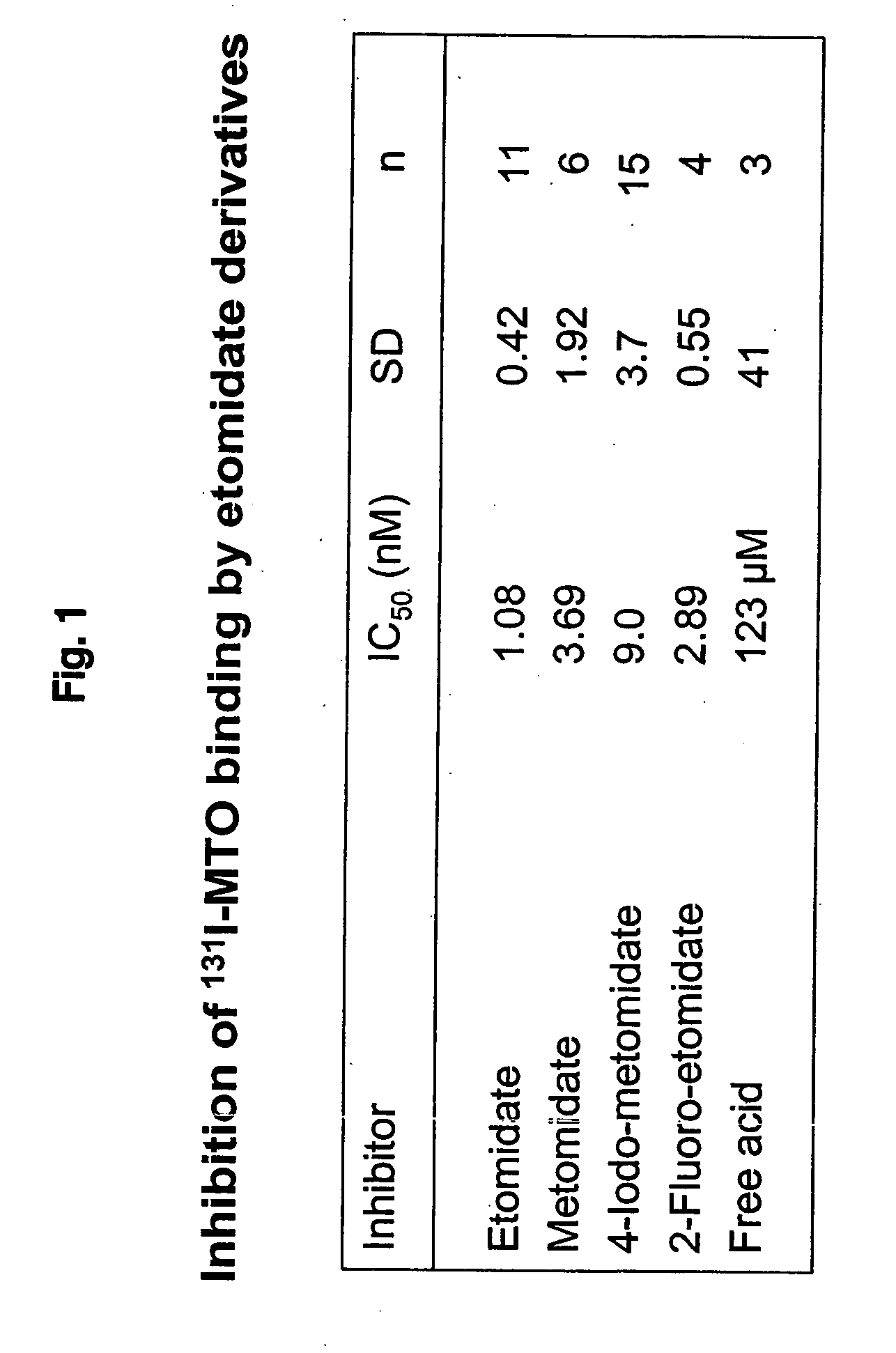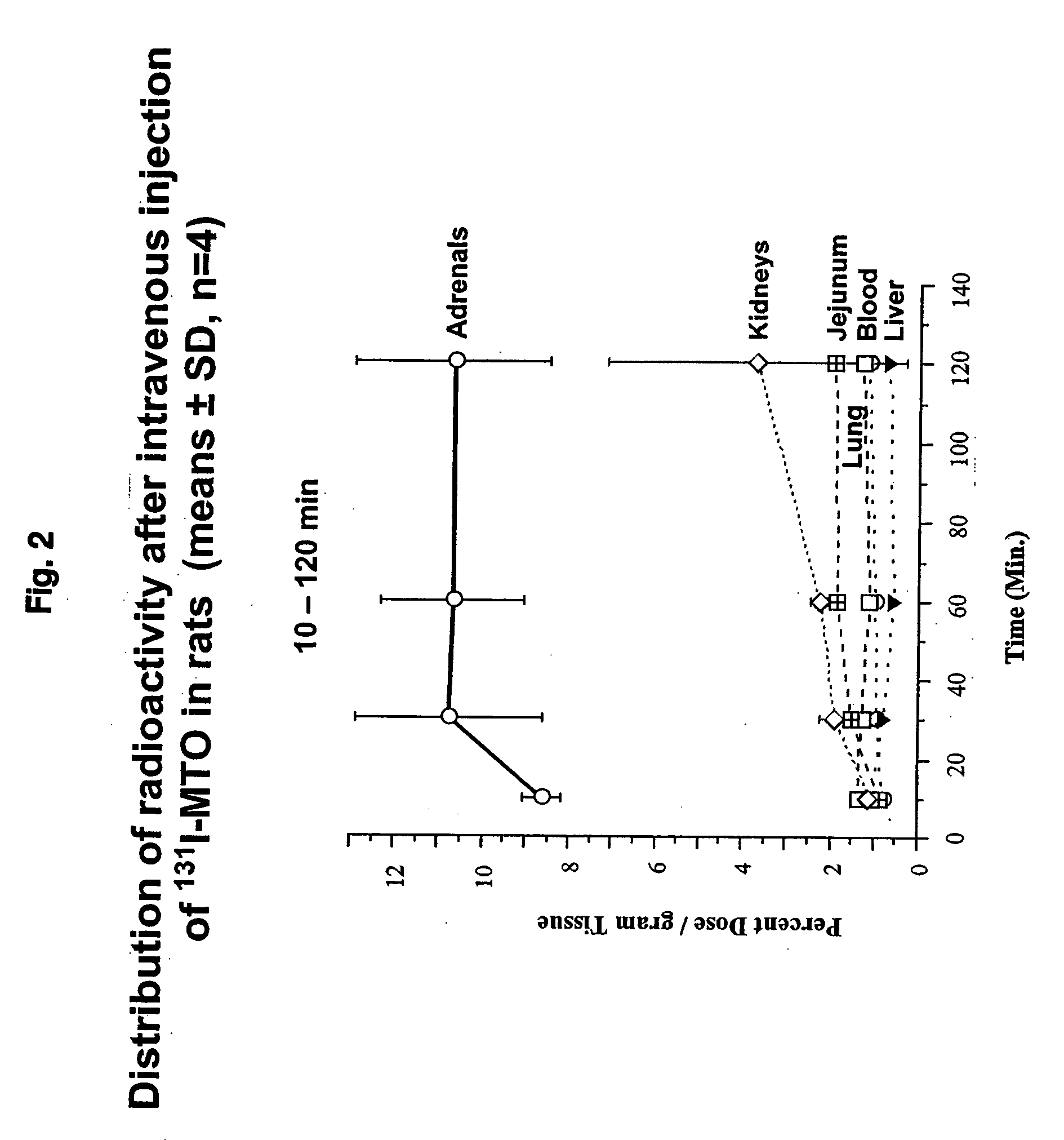Radiolabelled phenylethyl imidazole caboxylic acid ester derivatives
a technology of phenylethyl imidazole and ester derivatives, which is applied in the field of radiolabelled phenylethyl imidazole caboxylic acid ester derivatives, can solve the problems that the compound has never been used for clinical diagnosis, and the application of radiopharmaceuticals is limited to hospitals with a pet facility
- Summary
- Abstract
- Description
- Claims
- Application Information
AI Technical Summary
Benefits of technology
Problems solved by technology
Method used
Image
Examples
example 1
Preparation of (R)-3-[1-(4-[131I]iodophenyl)ethyl]-3H-imidazole-4-carboxylic acid methyl ester i.e. (131I-MTO);
a. Preparation of (S)-1-(4-iodophenyl)ethanol (III)
The substituted (S)-alcohol was prepared according to scheme 1
Preparation of (±)-1-(4-Iodophenyl)ethanol
A solution of DIBAH (16.45 cm3, 24.67 mmol, 1.5 M solution in toluene) was added dropwise to a stirred mixture of 4-iodoacetophenone (5.08 g, 20.65 mmol) in dry diethyl ether (50 cm3) at −78° C. in an atmosphere of argon. After stirring for 2 h at −78° C., methanol (2 cm3) was added and stirring was continued for 30 min at room temperature before water (10 cm3) was added cautiously. 30 min later, the aluminum hydroxide formed was dissolved in hydrochloric acid (50 cm3, 2 M) under cooling with ice. The organic phase was separated, washed with water and a saturated aqueous solution of sodium hydrogen carbonate, dried (magnesium sulphate) and concentrated under reduced pressure. The crude product was purified by fla...
PUM
| Property | Measurement | Unit |
|---|---|---|
| radioactive | aaaaa | aaaaa |
| positron emission imaging | aaaaa | aaaaa |
| affinity | aaaaa | aaaaa |
Abstract
Description
Claims
Application Information
 Login to View More
Login to View More - R&D
- Intellectual Property
- Life Sciences
- Materials
- Tech Scout
- Unparalleled Data Quality
- Higher Quality Content
- 60% Fewer Hallucinations
Browse by: Latest US Patents, China's latest patents, Technical Efficacy Thesaurus, Application Domain, Technology Topic, Popular Technical Reports.
© 2025 PatSnap. All rights reserved.Legal|Privacy policy|Modern Slavery Act Transparency Statement|Sitemap|About US| Contact US: help@patsnap.com



